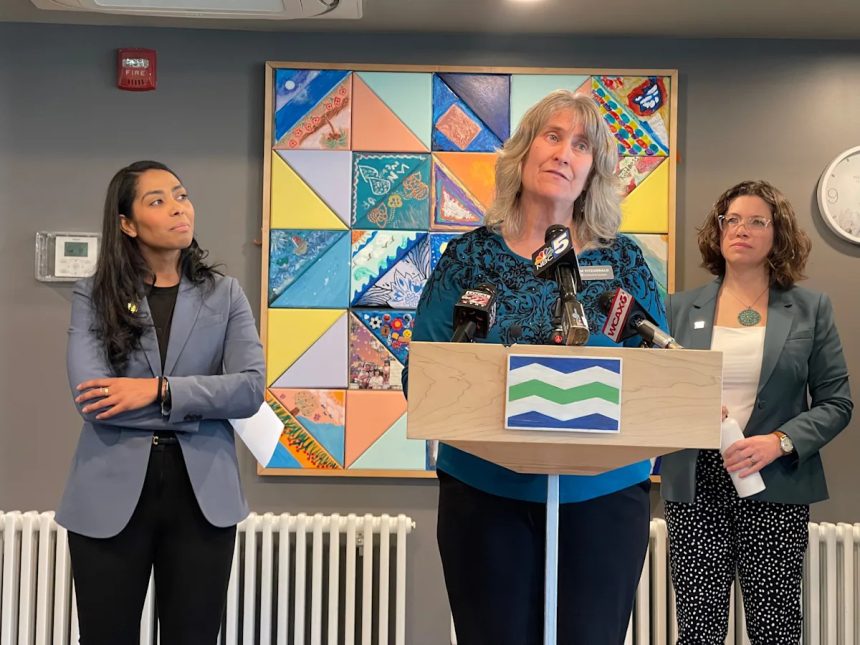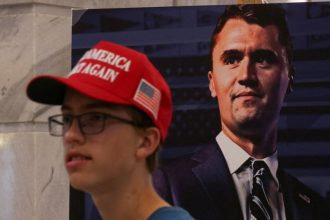To paraphrase the real estate maxim, when it comes to the Vermont economy, it’s all about workforce, workforce, workforce. In a nutshell, the state needs more workers to sustain growth.
“When we’re looking at our workforce, nearly 100,000 Vermonters are approaching retirement age,” said Amy Spear, president of the Vermont Chamber of Commerce. “Businesses can’t find workers today. We know it’s only going to get worse. We need 13,500 new people entering the workforce every year. Not insurmountable, but we have the lowest birth rate ever in the United States, so it’s something other states and cities are feeling as well.”
The winners of this year’s Top Workplaces competition − Home Care Assistance of Greater Burlington, Cathedral Square, PeoplesBank and Green Mountain Concert Services − are feeling the workforce shortage, which is why they strive to keep a strong culture.
“I would say, especially running an organization, I do very much worry about our staffing,” said Kim Fitzgerald, chief executive officer of Cathedral Square. “I was just looking last week at our age brackets, and although we have a pretty nice span of people in 10-year age brackets, I definitely see the age bracket of 60 and above as a big group, coming of age for retirement, and the bracket of 20- to 29-year-olds is not growing at the same rate. I’m very worried about the younger population taking over as people are retiring.”
Cathedral Square CEO Kim Fitzgerald speaks at the affordable housing press conference at the Laurentide Apartments in Burlington April 17, 2024. Regional Administrator Juana Matias and Mayor Emma Mulvaney-Stanak stand behind her.
The problem is exacerbated by the business Cathedral Square is in, according to Fitzgerald, because it requires 24/7 staffing for the organization’s assisted living communities.
“We absolutely have to have those caregivers,” Fitzgerald said. “We need folks who want to do this, who want to be there. The demographics in Vermont are concerning. The population is growing, yet the younger population is not staying in the state, and people are having fewer children.”
Exactly the point, says Spear. The chamber’s research shows that Vermont only retains about 2,000 of its roughly 5,000 high school graduates each year and only 4,500 of its college graduates.
“I believe we might be the lowest ranked in the country when it comes to retaining our college graduates,” Spear said.
Creating a flexible workplace increases appeal
Sean Leonardi, sales and marketing specialist for Green Mountain Concert Services, said the security company has an advantage when it comes to the Vermont workforce − flexibility.
“Currently, we have about 800 part-time employees company-wide,” Leonardi said. “You choose when you want to work. Once you come online in our system you’re training for your security license. Here are upcoming jobs. You sign up for the ones you want to work.”
GMCS gets a sufficient mix of workers signing up for jobs four days a week and those who only want to work one or two events every month, according to Leonardi.
Leonardi acknowledges, however, that over the past several years, the biggest challenge for Vermont businesses, including GMCS, has been finding employees, thanks to low unemployment, which translates to a sparse pool of potential workers.
“Every year our starting wage goes up and up to stay competitive,” Leonardi said. “We’re all fighting over the same pool of people looking for work.”
How Vermont’s unemployment rate creates a problem for employers
Jeffrey Carr, who has served as the state economist for the Vermont Agency of Administration for more than 23 years, confirmed the restricted nature of Vermont’s workforce in his revenue forecast for 2026 and 2027. Carr reported Vermont’s unemployment rate as of June 2025 “stood at just 2.6%,” which was only 0.8 percentage points above the all-time low of 1.8% established in July 2023 and August 2023.
Carr said Vermont’s June 2025 seasonally-adjusted unemployment rate remained as the lowest unemployment rate among the six New England states by at least half of 1 percent and ranked as 3rd lowest among the 50 states and the District of Columbia.
“As such, it seems to be that Vermont’s relatively slower-than-average rate of nonfarm payroll job recovery since the end of the pandemic is more a function of the lack of available workers versus being the result of a lagging economy,” Carr concluded.
What’s changing to attract veterans to Vermont
The Vermont Chamber of Commerce has an economic action plan that came out of its Vermont Futures Project, run by Executive Director Kevin Chu, who spent several years surveying business owners and others across the state to figure out what economic policies to champion.

Vermont is trying to make it more attractive for military retirees to stay here or move here with a new tax exemption for military pensions.
One of those policies Spear points to that came to fruition this year is to fully exempt pension income for military retirees from state taxes up to $125,000 annually, with a gradual phase-out of taxes between $125,000 and $175,000. The hope is the new policy will encourage those retirees to live in Vermont, enhancing the workforce.
“Vermont was ranked at the very bottom of the list of where retirees from the military would go because their pensions were taxed,” Spear said. “A nominal amount, $10,000, wasn’t taxed. Military retirees are often prime talent, exactly the workforce Vermont needs, and now they have an easier glidepath to retire into the state.”
This article originally appeared on Burlington Free Press: Vermont businesses face a shortage of workers, housing. What it means









